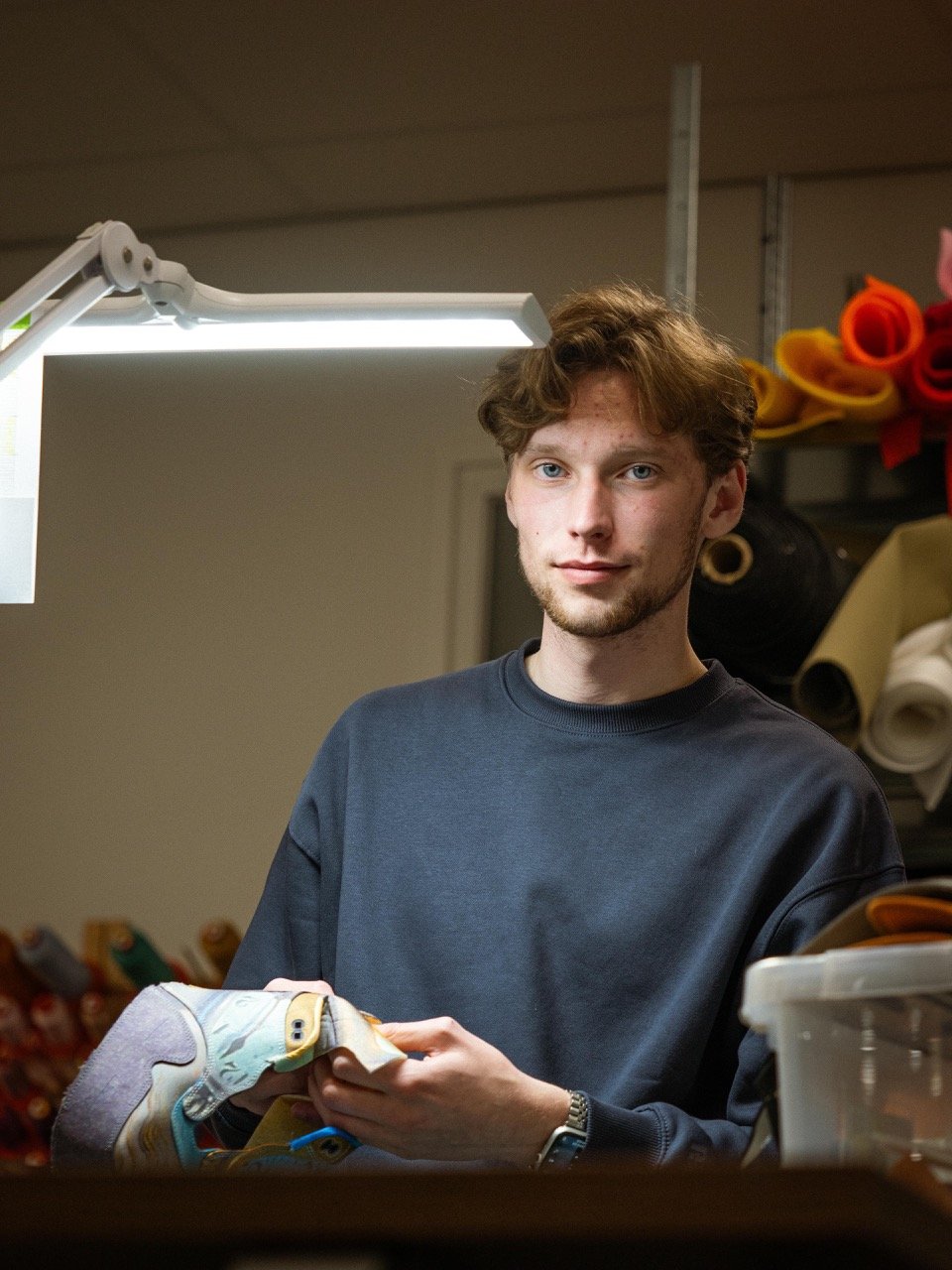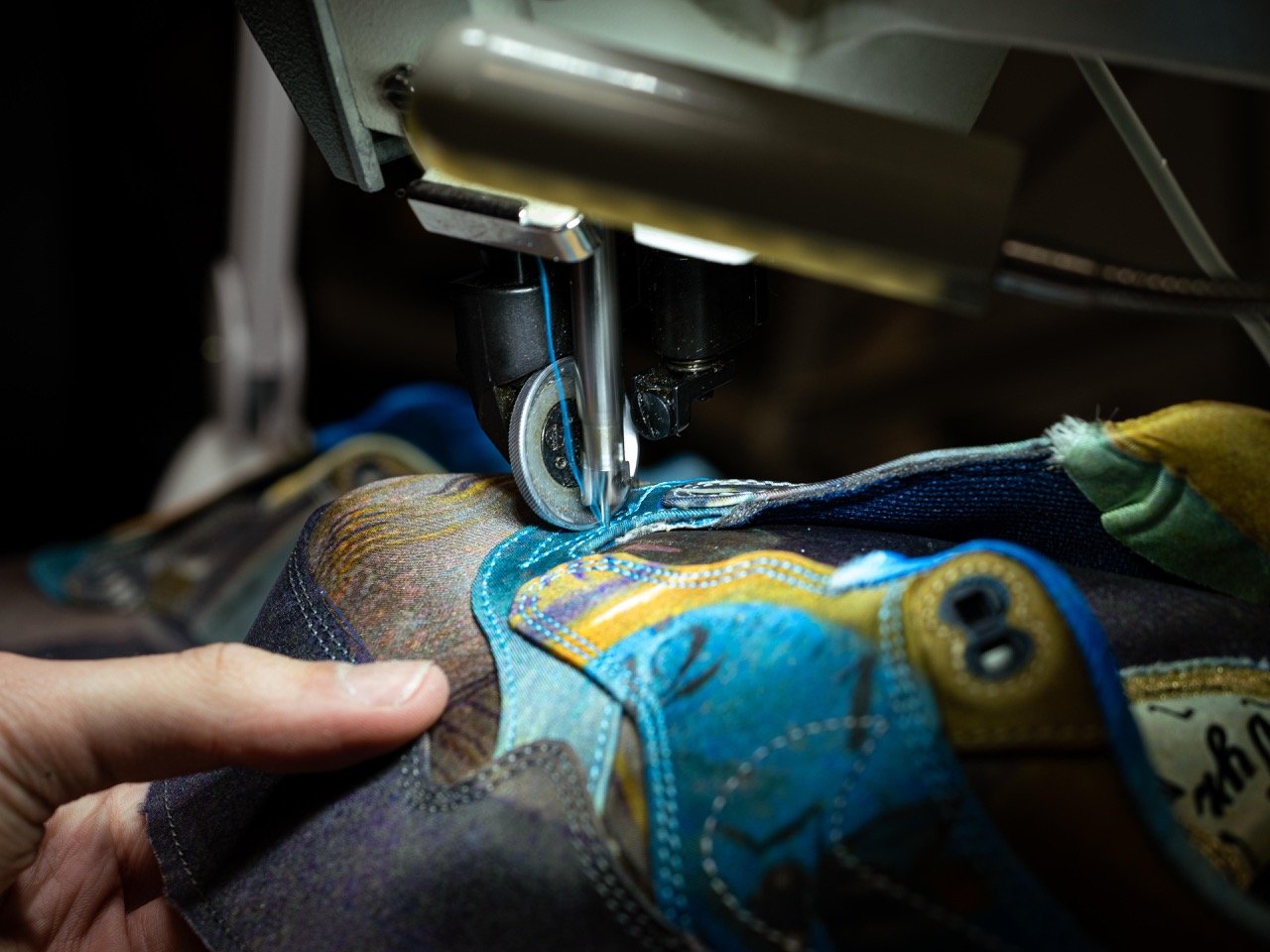Making Of: Air Max 1 - Persistence of Memory
Crafting a unique pair of sneakers isn’t just about the end result—it’s about the journey, the setbacks, and the attention to every detail. My latest project, the Air Max 1 "Persistence of Memory," took a year to complete, not because of its complexity, but because I wanted to approach every step thoughtfully. Inspired by Salvador Dalí’s surreal masterpiece The Persistence of Memory, this sneaker required a blend of creativity, patience, and precision. In this blog, I’ll walk you through the making of these sneakers, the challenges I faced, and the lessons I learned along the way. Interested in the origin of this design? Read this blog
A Vision Inspired by Dalí
The journey began with a silk scarf I spotted in the gift shop at Fabrique des Lumières. Printed with Dalí’s Persistence of Memory, the scarf immediately sparked an idea: to transform this artwork into a wearable piece. My mind was flooded with ideas, but once I decided to incorporate the melting clocks, it became clear that this would be no ordinary sneaker project. After discussing the concept with Tom, we agreed to use the entire scarf to make the sneaker, allowing Dalí’s art to cover the design.
Step 1: Designing the Melting Clock on the Tongue
The first detail I wanted to include was a reference to Dalí’s melting clock, and I knew the tongue would be the perfect place. I sourced a clock image, redrew it in Illustrator, and added the VIJZ logo for a personal touch. After creating a digital file, I sent it to the embroidery machine for a test on suede. Satisfied with the result, I carefully cut out the patch and stitched it onto the tongue, letting the design "melt" over the edge, just as in the artwork.
Step 2: Perfecting the Pattern Placement
After deciding to use the entire scarf, I faced a new challenge: aligning the patterns symmetrically. Achieving symmetry was essential to creating a balanced look. I clamped the scarf down on a large table to ensure I could visualize every part of the pattern and carefully marked out the sections. With only one scarf and just enough material to cover the sneakers, I had zero room for mistakes. Multiple nights were spent arranging and re-arranging until I was satisfied with the layout.
Step 3: Reinforcing the Silk on Suede
Since the silk scarf was too thin to be used alone, I decided to reinforce it by backing it with suede. This would provide both durability and a sleek finish. For a clean look, I folded the fabric edges over the suede backing.
Step 4: Cutting and Heat-Pressing the Patterns
Once the patterns were glued down, I needed to cut them out carefully. But with the material being so delicate, any sudden move could result in tearing. So, I turned the scarf face-down, glued the patterns to the back, and then pressed them together for a stronger bond. After carefully cutting around each pattern, I used a heat press to further secure the silk to the suede.
Step 5: Stitching and Choosing the Right Thread Color
After months of preparation, it was finally time to stitch the pieces together. I wanted the stitching to blend with the design’s natural flow, but because the pattern had multiple colors, I chose a thread color that matched the most to avoid clashing. This color would contrast in some places, creating a dynamic look across the sneaker without overpowering Dalí’s intricate design.
Step 6: Adding Unique Inner Details with Foam Backing
With the exterior complete, I turned my attention to the lining. I had enough leftover material to use it as a unique inner lining, creating a gradient effect that mimicked the outer design. To prepare the fabric for the lining, I reinforced it with foam backing. A heat press was used to bond the fabric to the foam, giving it the structure necessary to function as a sturdy, comfortable interior. This touch is one of my favorites, adding a hidden detail that makes the sneaker even more unique.
Step 7: Crafting the Tongue and Securing the Clock Patch
Next, it was time to attach the clock patch onto the tongue. I stitched the patch from the back, where the narrow section allowed me to keep the stitches clean. Then, flipping it to the front, I sewed the patch onto the tongue for a seamless finish. This two-step approach allowed the design to melt over the edge, enhancing the surreal aesthetic inspired by Dalí.
Step 8: Lasting the Sneakers and Final Assembly
Now came the moment of truth—lasting the sneakers. Given the stiffer materials, the shoes were initially challenging to shape around the last, and for a moment, I worried the pattern pieces might have been too small. But with a bit of heat from the heat gun, the material softened, allowing it to stretch perfectly. A shoutout to Tom, who gave me an extra hand in lasting the shoes.
After lasting, I filled the gap with cork for added comfort, sanded it down to a smooth surface, and marked where the upper would meet the sole. Using a press machine, I transferred this alignment to the sole, providing a guide for gluing. With a double layer of glue and a heat-activated bonding machine, I secured the upper to the sole.
Step 9: Final Details – Eyelets and Lace Tips
I initially planned to add gold eyelets and lace tips but realized (too late) that eyelets are best applied before lasting. With some hesitation, I carefully pressed the eyelets into place, knowing it was a risky move. Thankfully, everything held up, adding the finishing touch that gave the sneakers a polished, elevated look.
After a year of planning, designing, and creating, the Air Max 1 "Persistence of Memory" sneakers were finally complete. These shoes are more than a project; they’re a testament to the patience and persistence needed to bring a vision to life. Every detail, from the clock patch to the symmetrically placed patterns, represents hours of thoughtful work and dedication. These sneakers remind me that the creative process, like Dalí’s artwork, bends and stretches beyond fixed timelines—it takes the time it needs. And sometimes, the journey itself is the most rewarding part.














